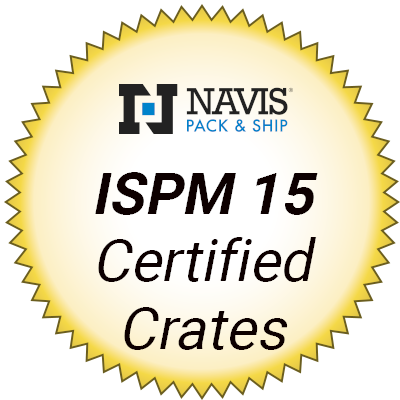How to Pack a Shipping Container
All you need to know about packing your own container in Deerfield
Containers
These are the large steel containers you have seen on highways, ships and railroads.
Loading
Options-Depending on where you live there are two loading options: the ‘live load’ or the ‘drop and pick’.
A ‘live load’ means that the trucker will bring the container to your home and wait for two hours while you load. If you exceed the two hours you will pay approximately $75 per hour for each additional hour of loading time.
A ‘drop and pick’ means that the driver leaves the container at your home for two full days. The ‘drop and pick’ normally costs twice as much as a ‘live load’, but has the advantage that you can take your time in loading and securing your belongings in the container.
If you live near a port, the cost for the ‘drop and pick’ is often not much more than a ‘live load’; the cost might be worth it to be able to take your time loading. However, if you live a good distance from the port, it is possible that a ‘live load’ will be the only option available.
Remember, you also need to bear in mind the container will arrive on a chassis that is approximately 4 feet off of the ground. You will need to have some strong friends to help you load, or you will need to rent a loading ramp. Also, the area where the container will be positioned needs to be a flat, firm surface. If you do not have your own driveway, be sure to find out if you can/must reserve parking in front of your home.
Packing
Be sure that you pack all cartons tightly and that your furniture is well wrapped for full protection during the journey. We suggest wrapping furniture in KraftWrap®, a thick brown paper with bubble packaging on one side. Other alternatives are bubble packaging, old comforters/blankets, movers’ blankets or paper blankets.
Save $$$--packing, loading and unloading your container can save you thousands in charges. However if you are not comfortable with packing, you can always hire a small local moving company to help you.
The other side--At the destination you can either a) arrange customs entry then have the container positioned at your house for you to ‘live unload’ or b) terminate services at the port and customer can arrange for customs and unloading.
Inspection
Before loading anything inside, inspect the shipping container carefully. Be sure there are no holes in the container BEFORE you allow the driver to leave.
Start with the large and heavy items like appliances and load them on the floor against the front wall of the container.
Continue loading heavier items on the floor and towards the front of the container, placing lighter items on top.
Place mattresses along the sides of the container but keep one to load at the rear of the container just behind the doors
Pack the items tightly so nothing moves. Work your way along in tiers loading from bottom to top. Look at the spaces in the tier and then go and look for an item to fill that space. Sometimes you can use an empty box, pillows, blankets or even soft toys to fill in the gaps.
Packing and loading the container well is the key to getting your shipment in good shape at the other end.
Put a box of things you will need at the destination in the back (by the doors) so you get it first when unloading. Things in this box may include a few toys for the kids, a knife to help you unpack, tea bags, coffee mugs, glasses, a radio, cleaning materials and gloves.
Boxes are easy to carry and easy to stack; pack as many items as you can into boxes. Try to use newer boxes; reused cartons are more likely to collapse during shipping.
When in doubt, put another layer of packing material around your items; better safe than sorry!
You might find it helpful to write the contents on the outside of each carton. When you reach your destination you will know where each carton goes.
Use blankets, bubble packaging and cardboard to protect items from rubbing against each other. Blankets, bubble packaging and cardboard can also be used to fill in any empty spaces. It is important that everything fits in snug and tight so nothing shifts during the ocean transit.
If necessary you can tie items to the sides of the container with straps. There are rings spaced throughout the container on the ceiling and floor, you will need to provide your own straps.
The floor of the container is made of wood. Feel free to make your own wooden braces to secure items within the container. You do not want any empty space in the container or your goods will shift during shipping.
There are two loading strategies:
Option 1: ‘Floor Load’ the container, keeping everything low to the ground. If the floor of the container is covered, goods will not be able to shift from side to side.
Option 2: Build a ‘bulkhead’. Load the container from floor to ceiling, and then build a wall to keep the goods from falling into the open space. You can build the wall using plywood sheeting and 4 x 4 wood.
Need a quote? Call us at (815) 630-5673, and we'd be happy to listen and provide a custom solution based on your needs. Thank you for giving Navis the opportunity to earn your trust, and your business.
Sincerely,Steve & Nora Hipskind
DEERFIELD, IL 60015
Get a Shipping Quote
Navis Pack & Ship
-
500 Lake Cook Road Corporate 500DEERFIELD, IL 60015
- (815) 630-5673
- [email protected]
- By Appointment
Monday - Friday: 8:00AM - 5:00PM This Location is Sales Only
Call us: (815) 630-5673- Serving North Chicago Suburbs & the North Shore

